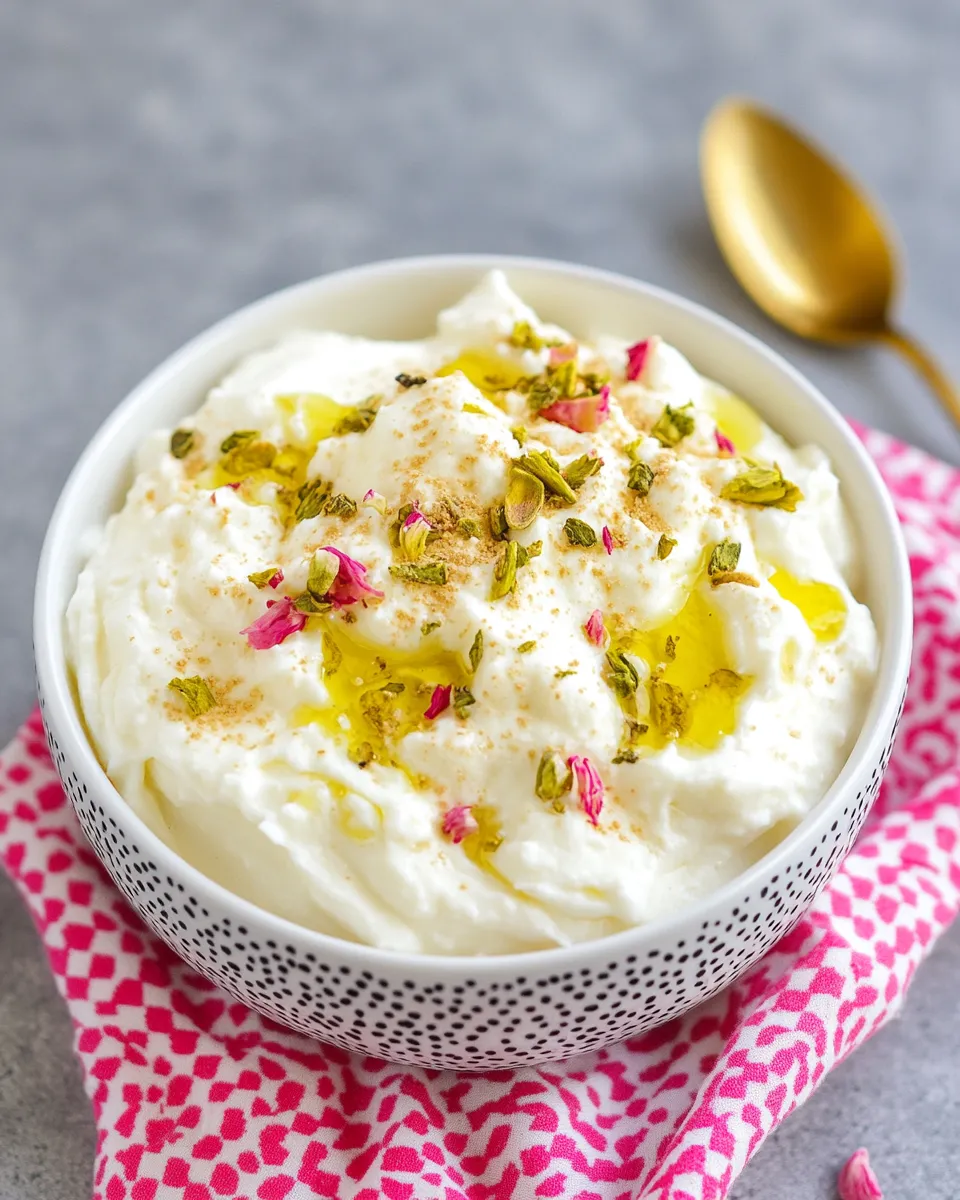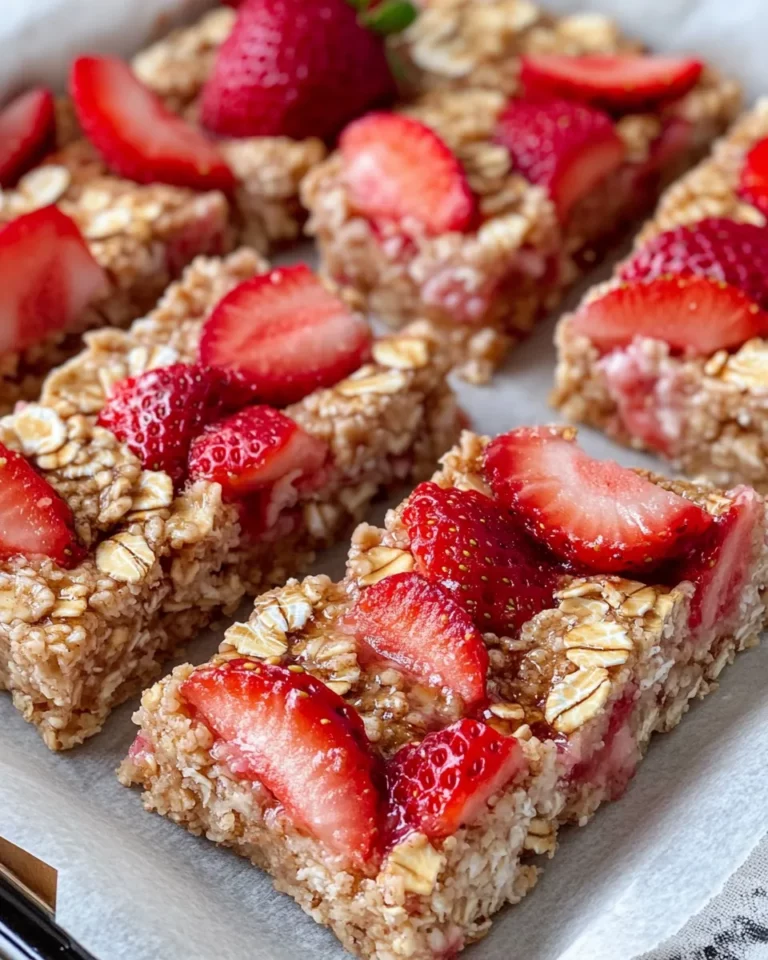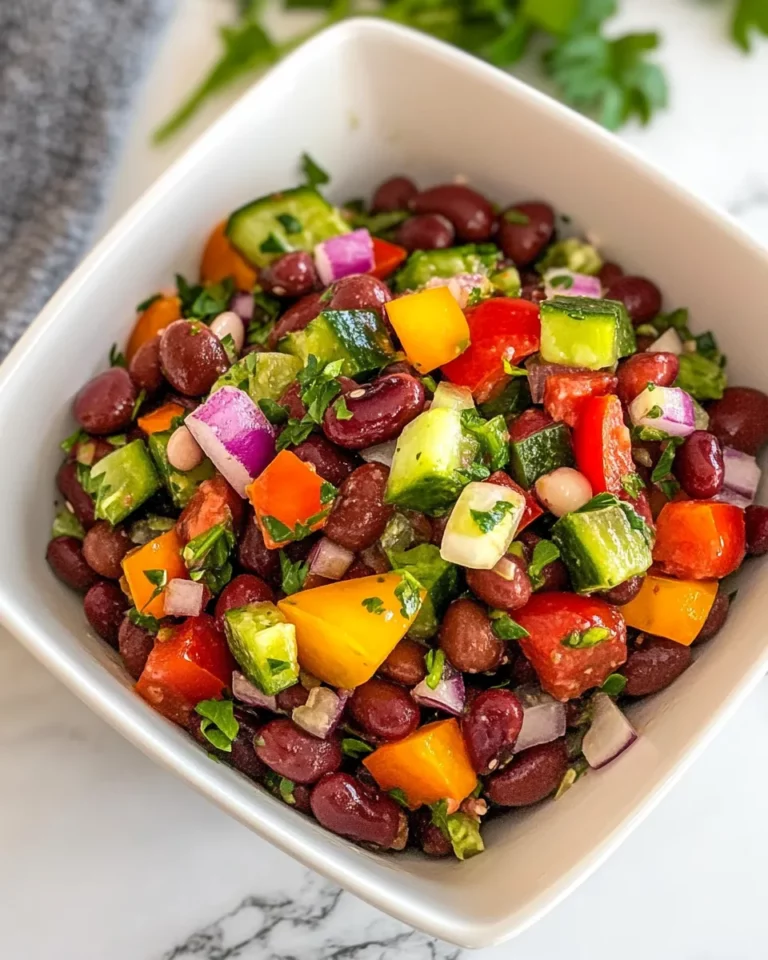If there’s one treat that perfectly embodies the word “indulgence,” it has to be ashta, the delightful Middle Eastern clotted cream.
This creamy delicacy is smooth, rich, and utterly delicious, making it a must-have for anyone who enjoys Middle Eastern desserts.
Think of it as a luxurious topping for your favorite sweets or a dip served with fresh fruits.
Whether you’re layering it in a dessert, spreading it on pastries, or just enjoying it with a spoon (no judgment here!), ashta brings a subtle sweetness and a creamy texture that will elevate any dish it’s paired with.
Making ashta at home might sound intimidating, but the truth is, it’s surprisingly simple.
With just two ingredients and a bit of patience, you can whip up your very own homemade ashta.
So let’s dive into this beautiful recipe and discover why it should definitely be on your list to try.
Why This Recipe Is a Must-Try

Ashta is not just a treat—it’s an experience.
Here are a few reasons why you should give this recipe a shot:
- Traditional Flavor: Ashta offers an authentic taste that brings a taste of the Middle East right into your kitchen.
- Versatility: You can use ashta in a multitude of ways—whether you’re adding it to desserts, using it as a filling, or simply enjoying it on its own.
- Simple Ingredients: With just two ingredients, you probably already have what you need at home. No specialized equipment required!
- Pure Indulgence: This clotted cream is rich and creamy, making it a luxurious addition to any meal or snack.
- Homemade Magic: There’s something special about making this treat from scratch. The process feels rewarding and the result is absolutely worth it.
Ingredients
To make ashta, you’ll need just a couple of ingredients that are easily accessible.
Here’s what you’ll need:
- 4 cups (960 ml) whole milk (not ultra-pasteurized or UHT)
- 2 tablespoons (30 ml) white vinegar or lemon juice
That’s it! Just two simple ingredients to create this luscious clotted cream.
How To Make Ashta (Middle Eastern Clotted Cream)

Making ashta is a rewarding and straightforward process.
Here’s a step-by-step guide to help you create your own homemade ashta.
Step 1: Prepare the Milk
Start by pouring 4 cups of whole milk into a heavy-bottomed saucepan.
Make sure to use milk that is pasteurized, but not ultra-pasteurized or UHT.
The right type of milk is crucial for achieving that rich and creamy texture we all love.
Step 2: Heat the Milk
Place the saucepan over medium heat and gently warm the milk.
Stir occasionally to prevent it from sticking to the bottom of the pan.
You want to heat the milk until it’s just about to simmer—watch for tiny bubbles forming around the edges, but do not let it boil.
Step 3: Add the Acid
Once the milk is heated, remove it from the heat and stir in 2 tablespoons of white vinegar or lemon juice.
This is the secret step that will cause the milk to curdle, separating the solids from the whey.
Step 4: Let It Sit
Cover the saucepan and let the milk sit for about 10-15 minutes.
You’ll notice that the milk has thickened and curds have formed.
Step 5: Strain the Curds
Next, line a fine mesh strainer with cheesecloth or a clean kitchen towel and place it over a large bowl.
Carefully pour the curdled milk mixture into the strainer.
Allow it to drain for at least 30 minutes to an hour, depending on how thick you want your ashta to be.
For a thicker consistency, let it drain longer.
Step 6: Transfer and Chill
Once the ashta has reached your desired thickness, transfer it into an airtight container.
Let it cool to room temperature before sealing it up and placing it in the refrigerator.
Step 7: Enjoy!
After chilling for a few hours, your ashta is ready to enjoy! You can eat it on its own or use it in your favorite recipes.
Expert Tips
- Milk Matters: Ensure you use whole milk that is pasteurized but not ultra-pasteurized for the best results.
- Acidity Choice: If you prefer a more tangy flavor, go with lemon juice. For a milder taste, stick with vinegar.
- Texture Control: The longer you allow the ashta to drain, the thicker it will become. Experiment to find your perfect texture!
- Storage: Make sure to store ashta in an airtight container to keep it fresh in the fridge. It can last up to a week.
Variations and Customizations

Ashta is incredibly versatile, so feel free to mix things up! Here are some fun ideas to customize your ashta:
- Flavor Additions: Mix in a splash of rose water or orange blossom water for a fragrant twist.
- Sweeten It Up: If you like your ashta sweeter, you can stir in a bit of powdered sugar or honey after it has cooled.
- Infused Cream: For a richer flavor, consider infusing the milk with vanilla pods while heating it.
- Nutty Topping: Top your ashta with crushed pistachios or almonds for an added crunch.
How to Store Leftovers
If you happen to have any leftover ashta (which is unlikely, given how delicious it is!), here’s how to store it:
Ashta can be stored in an airtight container in the refrigerator for up to a week.
If you notice that it thickens up too much, simply stir in a bit of milk to reach your desired consistency before serving.
FAQ
Can I use low-fat milk instead of whole milk?
Using low-fat milk will affect the creaminess and texture of the ashta.
Whole milk is recommended for the best results.
How do I know if my ashta has thickened enough?
The ashta should be thick enough to hold its shape when scooped out of the container.
If it’s too runny, simply let it drain longer in the strainer.
What can I serve with ashta?
Ashta is delicious on its own but pairs beautifully with fresh fruits like strawberries or figs, or you can use it as a filling for pastries or pancakes.
Can I freeze ashta?
While it’s best enjoyed fresh, you can freeze ashta in an airtight container for up to a month.
Thaw it in the refrigerator overnight before using it.
Conclusion
There you have it—a simple and delightful recipe for ashta, the luxurious Middle Eastern clotted cream.
With just two ingredients and a little bit of time, you can create a versatile treat that can elevate your desserts and snacks.
Whether you enjoy your ashta on pastries, with fruits, or just all by itself, it’s a taste of indulgence that’s sure to impress.
So next time you’re in the mood for something creamy and delicious, give this homemade ashta a try.
You might just find yourself making it on repeat! Happy cooking!

Ashta (Middle Eastern Clotted Cream)
Equipment
- Heavy-bottomed saucepan
- Fine mesh strainer
- Cheesecloth or kitchen towel
- Airtight container
Ingredients
Ingredients
- 4 cups Whole milk Not ultra-pasteurized or UHT
- 2 tablespoons White vinegar or lemon juice
Instructions
- Step 1: Pour 4 cups of whole milk into a heavy-bottomed saucepan.
- Step 2: Place the saucepan over medium heat and gently warm the milk, stirring occasionally.
- Step 3: Once heated, remove from heat and stir in 2 tablespoons of white vinegar or lemon juice.
- Step 4: Cover and let sit for 10-15 minutes until thickened and curds form.
- Step 5: Line a fine mesh strainer with cheesecloth and pour the curdled mixture into it. Let drain for 30 minutes to an hour.
- Step 6: Transfer the ashta to an airtight container and let cool to room temperature before refrigerating.
- Step 7: Chill for a few hours before enjoying on its own or in recipes.






